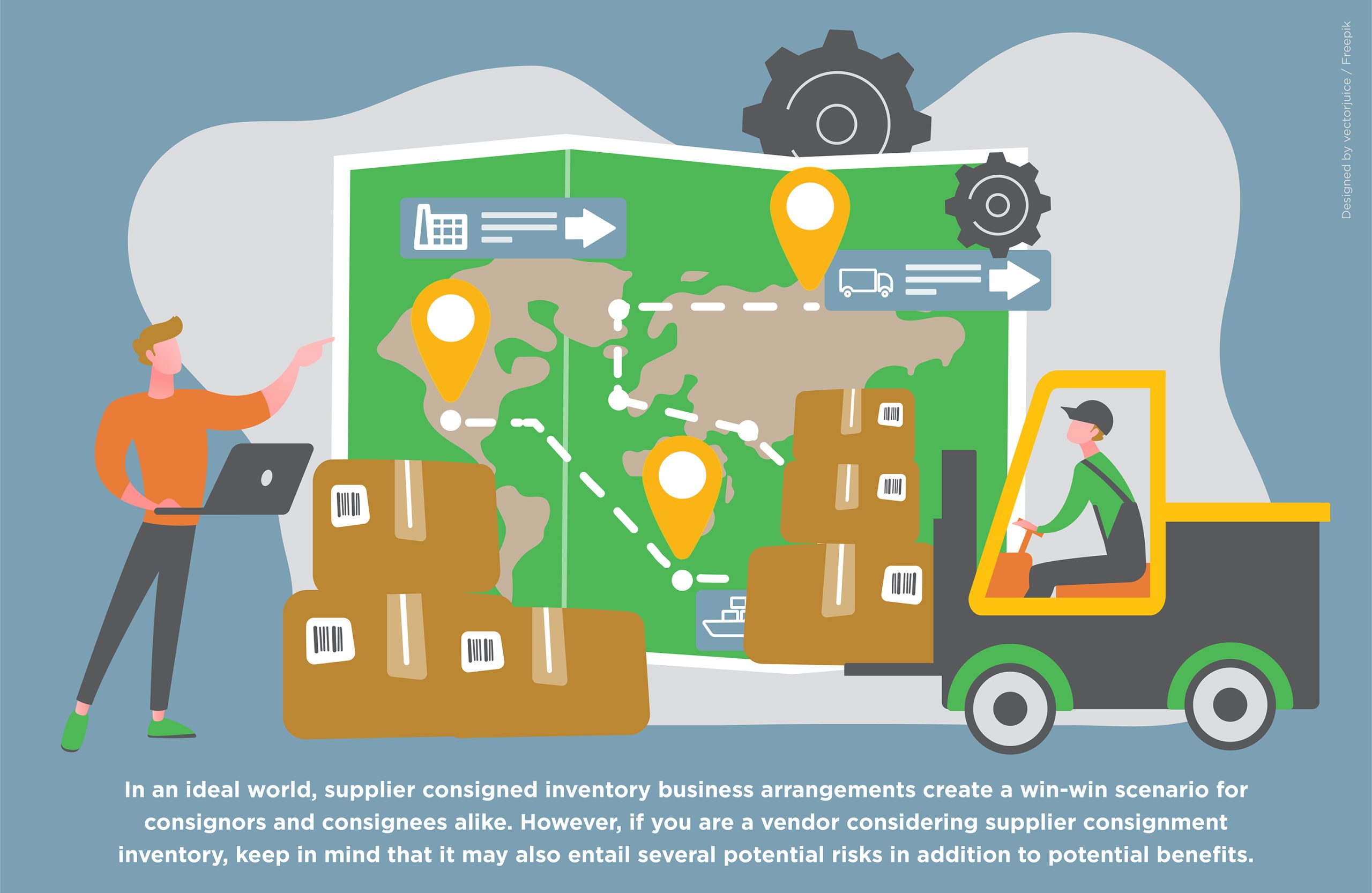Insights on simplifying the supply chain and reducing costs with mutually beneficial strategies
Consignment inventory is a business arrangement in which a consignor (supplier) agrees to give its goods to a consignee (buyer) without requiring the consignee to pay for the goods upfront. In other words, the consignor still owns the goods it has supplied, even though the consignee has possession of them. The consignee pays for the goods only after selling them.
Generally speaking, the consignor is a vendor or wholesaler, whereas the consignee is usually a retailer.
In an ideal world, supplier consigned inventory business arrangements create a win-win scenario for consignors and consignees alike. For example, they can simplify the supply chain and reduce expenses by eliminating the need to warehouse items and pay related shipping costs. They can also help both parties create mutually beneficial business processes, jointly identify the best products to sell, and support each other’s growth.
However, if you are a vendor considering supplier consignment inventory, keep in mind that it may also entail several potential risks in addition to potential benefits.

The Pros
- Building relationships: Consignment requires suppliers and retailers to work together and maintain contact on a regular basis. This supports your ability to continue working together and growing sales for each other in the future.
- Product visibility: More customers can be exposed to a supplier’s product through consignment than if it were distributed through traditional methods.
- Reduced inventory costs: You should have enough inventory to cover sell through and any safety stock or anticipation inventory. If you find yourself with inventory issues, it might be time to switch to the inventory cycle count method. Holding a large amount of merchandise inventory is expensive. With consignment, all storage costs are the responsibility of the retailer.
- Insight into product trends: You can track your consigned inventory sales to discover which products convert and how long it takes. This allows a supplier to invest in the right product and only hold the most beneficial raw materials inventory in order to make the most profit.
- Direct-to-retailer shipping: Instead of having inventory shipped to a warehouse and then to a retailer, you can have manufacturers deliver the inventory directly to the retailer. This streamlines the supply chain, saves labor costs, and gets goods on retailers’ shelves faster.
The Cons
- Uncertain investment outcomes: Investing a large amount of money in shipping costs associated with a large amount of new inventory may entail a significant initial outlay without a guaranteed outcome.
- Poor sales: If the item you supplied does not sell, you face a loss because you still own the inventory and will not receive payment.
- Lack of promotion: With no monetary risk, your customer may not be motivated to aggressively promote the inventory you provided. Without enough visibility, those products could remain unsold for a long time.
- Liability for damage: You may also have to bear any expenses arising from products that were damaged before being sold to your consignee’s customers.
How it Works
The lifecycle of supplier consigned inventory includes five components: a consignment agreement, a consignment order, shipping/receiving, consumption advice, and invoice/payment.
Consignment agreement: A consignment agreement spells out the details of the consignor/consignee relationship, including the items to be sold, the prices, and the payment process.
Consignment order: A consignment order, which reflects the terms of the consignment agreement, is a formal request from a buyer to receive goods from a supplier. It specifies the items to be supplied, their prices, and information about how and when they should be delivered.
Ship and receive items: The shipping and receiving process generally works the same way as it does in non-consignment deals. However, the immediate result is different because the supplier continues to own the goods in the possession of the seller.
Consumption advice: Consumption advice is a document the buyer provides to the supplier listing the items that have been sold during a specific period.
Invoice and pay: After receiving consumption advice, the supplier initiates the financial settlement by submitting an invoice to the buyer. The buyer, in turn, submits payment according to the terms of the consignment agreement.
At Inspirage, we work closely with our customers to implement the Oracle technology and services that address every aspect of the supplier consigned lifecycle. Those solutions include Oracle Fusion Purchasing (for creating consignment agreements and consignment orders), Oracle Fusion Receiving (for receiving consigned material), Oracle Fusion Cost Management (for calculating costs), Oracle Fusion Inventory Management (for consuming material and creating consumption advice), and Oracle Fusion Payables (for invoicing and paying).
Inspirage can help
As the Integrated Supply Chain Specialists, with recognition from Gartner, IDC, and winners of Oracle’s ERPM (Enterprise Resource Planning & Management) & Supply Chain Management Cloud Partner of the Year (Global) awards in recent years, Inspirage is uniquely qualified to be your success partner. Whether you are upgrading your on-prem system or have decided to move to the cloud where continuous improvement is built-in, our team is prepared to guide you on your transformational journey. Contact Inspirage today to learn more about the role supplier consigned inventory can play in your organization.
